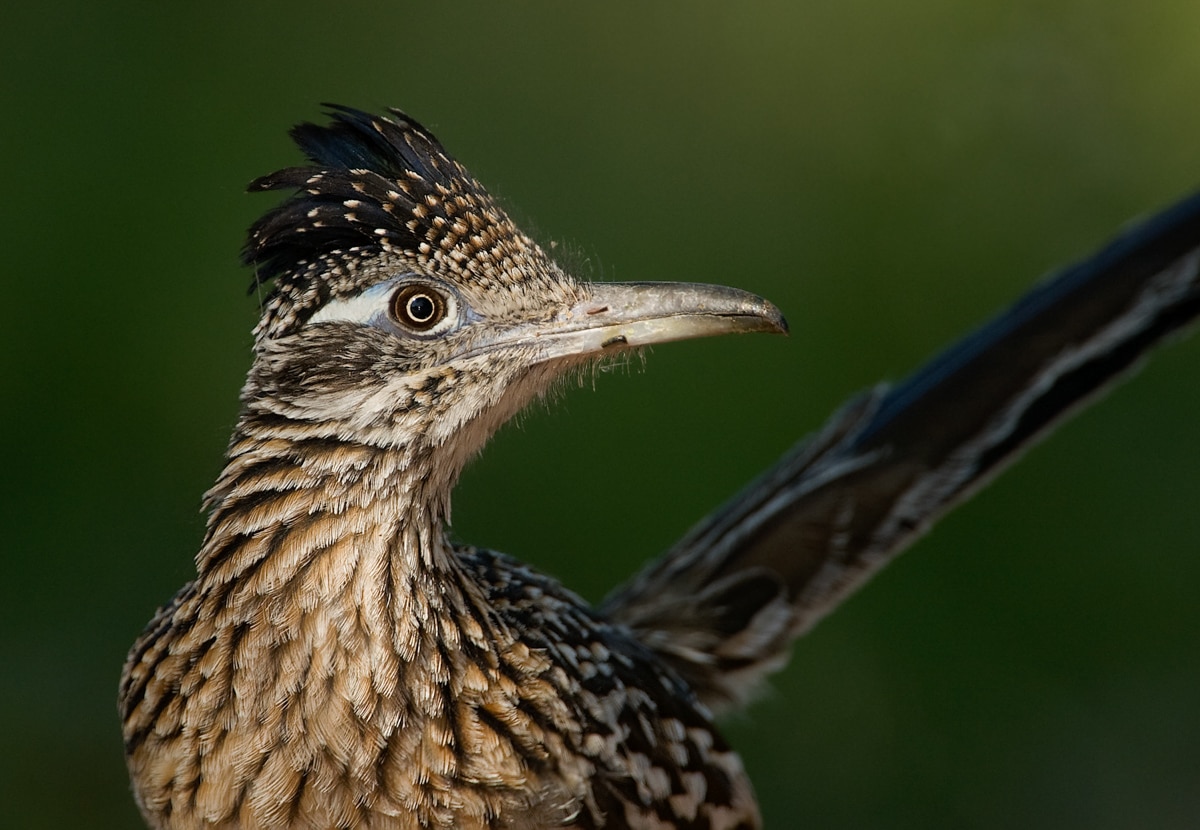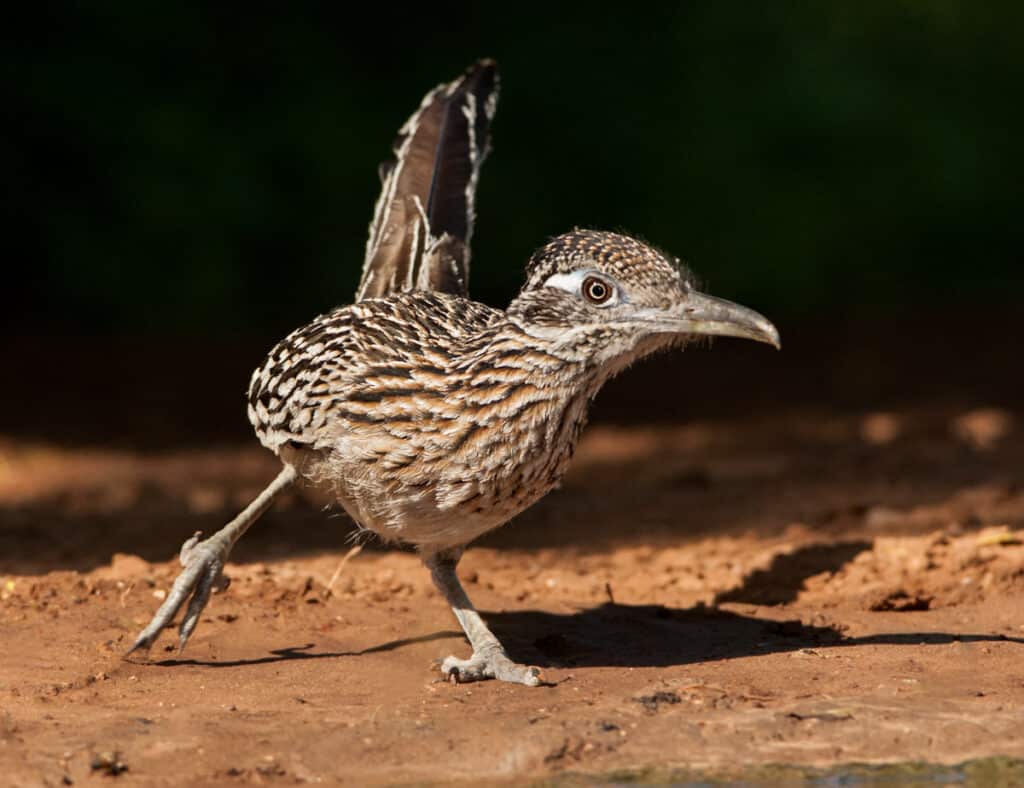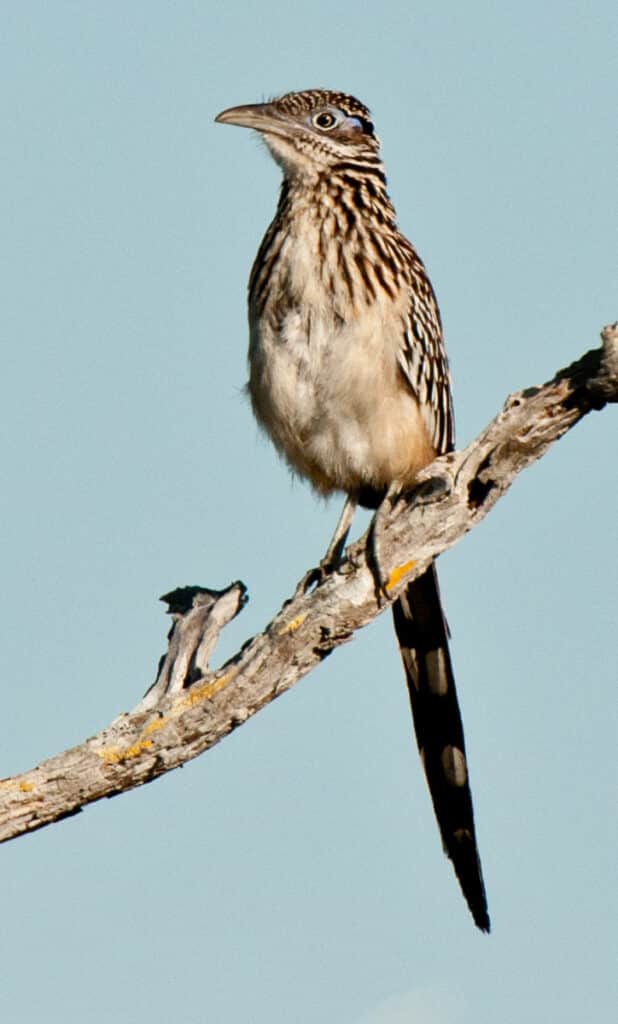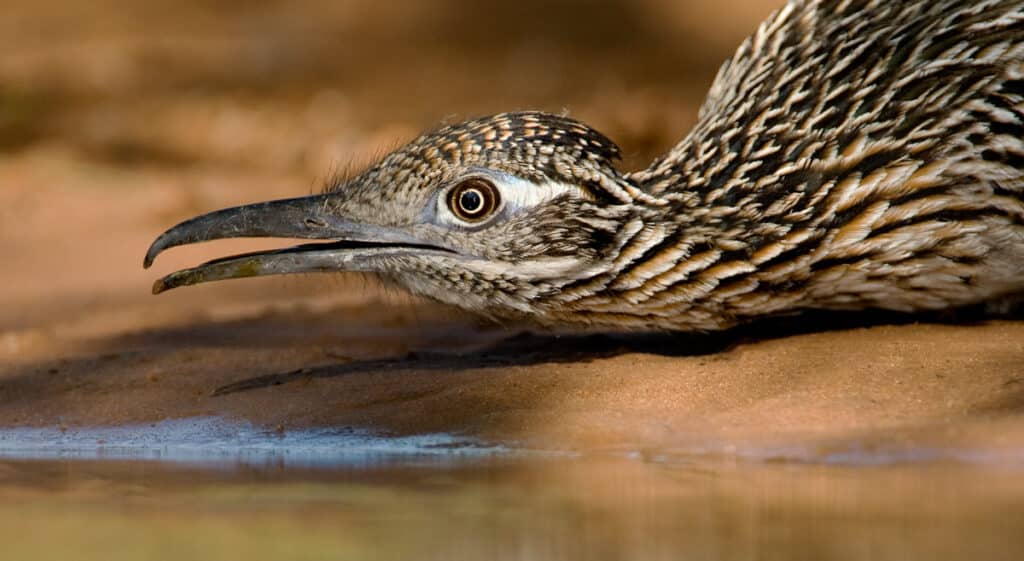
Roadrunners are fun, quirky birds that can make great photography subjects. But what makes these birds so popular and special? They do far more than just outwit cartoon coyotes, and photographers who better appreciate their attributes can be better prepared to capture the very best roadrunner shots.

All About Roadrunners
There are only two species of roadrunners in the world, the greater roadrunner (Geococcyx californianus) and the lesser roadrunner (Geococcyx velox). Both belong to the 150 species in the bird family Cuculidae, and are close relatives with anis, cuckoos, couas, and coucals.
The greater roadrunner is the more familiar and widespread of the two roadrunners, as its broad range covers from central and southern California throughout the southwestern United States as far east as Oklahoma, Arkansas, and western Louisiana. The greater roadrunner is also seen as far south as central Mexico.
The lesser roadrunner, while no less fascinating than its “greater” cousin, has a much more restricted range from Mexico’s west coast into central America as far south as western Nicaragua.

No matter where they may be seen, both types of roadrunners remain in their range year-round, without migrating. During the breeding season they are slightly more reclusive, but they are typically easy to see in the dry, brushy scrub habitat they prefer. In thicker areas, the birds may be heard before they are seen, and while they do not have a high-pitched “meep-meep” call, they do have a rather slow, descending, even “coo-coo-coo-coo” call. Rapid bill clacking is another part of their repertoire, often used to signal alarm.
When an alarm is sounded, roadrunners prefer to run on their strong legs, rather than take flight. They typically fly low to the ground and make a quick exit with short, direct flights. Running, however, is a more typical exit strategy for a roadrunner.
Both roadrunners have long, narrow tails they use as rudders while running, which helps them steer more agilely. This is especially helpful since roadrunners can run as fast as 20-25 miles per hour, making a fast shutter speed essential to successfully freeze their movement in an action photo. And they do indeed run along roads, as well as any natural pathways such as dry creeks, gullies, or wildlife trails. Throughout the day, roadrunners will routinely patrol their territory as they hunt.

What roadrunners hunt varies widely. These are opportunistic omnivores, which means they will eat just about anything they can catch. Roadrunners regularly hunt lizards, beetles, grasshoppers, snakes, snails, and even the nestlings of other birds. They will also eat eggs, and have even been recorded as jumping to catch – and eat! – hummingbirds. When prey is scarce, these birds eat berries and other fruit, as well as seeds. Birders and bird photographers who live in roadrunners’ native range can attract these birds by landscaping with native fruit-bearing plants as a familiar food source.
As birders have more opportunities to see roadrunners, they will quickly learn to recognize these distinctive birds. Not only is the long tail an excellent field mark, but the birds are quite large overall, measuring 22-24 inches long from bill to tail. Their spotted plumage and paler underparts are excellent camouflage, but in bright sunlight, the glint of metallic iridescence on a roadrunner’s tail and wings is a beautiful feature to capture.
Photographers should also take a close look at a roadrunner’s face and eye. These birds have a shaggy crest, and bare skin around the eye that is white, pale blue, and red on the greater roadrunner, and just pale blue on the lesser roadrunner. Capturing these small details highlights these birds’ distinction.

Another very distinct feature of roadrunners is their zygodactyl feet, with two toes facing forward and two facing backward, creating an X-shape print. This can make it hard to track which way a roadrunner may have run down a dusty path, and was seen as a spiritual omen by many Native American tribes – a roadrunner would be able to confuse evil spirits and lead them away.
Different tribes saw roadrunners as good luck birds and protective guardians, including the Hopi, Pueblo, Anasazi, and Pima tribes. Even today, roadrunners are honored as the state bird of New Mexico.
With so many interesting facts about roadrunners, there is always something new to capture by photographing these intriguing birds. By better understanding their habits and what makes them special, bird photographers will be better able to truly show just how amazing these birds really are.


